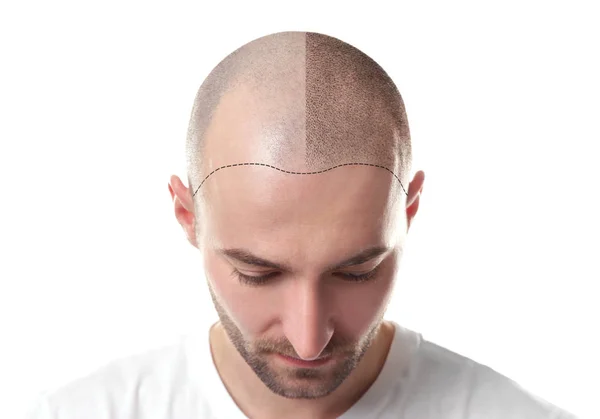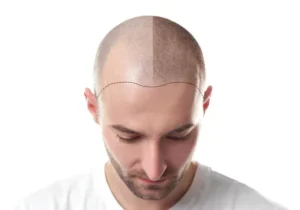FAQs About Hair Transplant
Hair transplant surgery has become an increasingly popular solution for those experiencing hair loss or thinning. To help you understand this procedure better, we’ve compiled a detailed FAQ that addresses the most common questions about hair transplant surgery.

1. What is Hair Transplant Surgery?
Hair transplant surgery is a minimally invasive procedure that involves moving hair follicles from one part of the body (typically the back or sides of the head, known as the donor area) to the thinning or balding areas (the recipient area). The goal is to restore hair growth in areas affected by hair loss.
2. What Are the Different Types of Hair Transplant Techniques?
There are primarily two techniques used in hair transplant surgery:
- Follicular Unit Transplantation (FUT): Also known as the strip method, this technique involves removing a strip of scalp from the donor area, dissecting it into individual follicular units, and implanting them into the recipient area.
- Follicular Unit Extraction (FUE): This method involves extracting individual hair follicles directly from the donor area and implanting them into the recipient area. FUE is less invasive and leaves minimal scarring compared to FUT.
3. Who is a Good Candidate for Hair Transplant Surgery?
Good candidates for hair transplant surgery typically include individuals who:
- Have significant hair loss or thinning.
- Have sufficient donor hair on the back or sides of the head.
- Are in good overall health.
- Have realistic expectations about the outcome of the surgery.
4. What Can I Expect During the Consultation?
During your consultation, the surgeon will:
- Assess your hair loss pattern.
- Examine the donor and recipient areas.
- Discuss your medical history.
- Explain the different hair transplant techniques.
- Provide an overview of the expected results and recovery process.
- Answer any questions you may have.
5. How is the Procedure Performed?
The procedure typically involves the following steps:
- Preparation: The donor and recipient areas are cleaned and numbed with local anesthesia.
- Harvesting: Hair follicles are extracted using FUT or FUE techniques.
- Graft Preparation: Extracted follicles are carefully prepared for transplantation.
- Implantation: Tiny incisions are made in the recipient area, and the follicles are implanted.
6. How Long Does the Procedure Take?
The duration of the procedure varies depending on the extent of hair loss and the number of grafts needed. Typically, a hair transplant surgery can take anywhere from 4 to 8 hours.
7. What is the Recovery Process Like?
Post-surgery, you may experience mild swelling, redness, or discomfort in the donor and recipient areas. Recovery guidelines usually include:
- Avoiding strenuous activities for a few days.
- Keeping the scalp clean and following the surgeon’s care instructions.
- Taking prescribed medications to manage pain and prevent infection.
- Refraining from touching or scratching the treated areas.
8. When Will I See Results?
Initial hair growth can be seen within a few months, but full results typically take 12 to 18 months as the transplanted hair grows and thickens. It’s important to note that the transplanted hair will shed initially before new growth begins.
9. Are There Any Risks or Side Effects?
Hair transplant surgery is generally safe, but like any surgical procedure, it carries some risks. Potential side effects include:
- Infection
- Bleeding
- Scarring
- Swelling
- Temporary numbness
- Unnatural-looking hair growth
10. How Long Do the Results Last?
The results of a hair transplant are considered permanent. The transplanted hair follicles are resistant to the hormone DHT, which is responsible for hair loss, and will continue to grow in their new location.
11. How Much Does Hair Transplant Surgery Cost?
The cost of hair transplant surgery varies based on factors such as the extent of hair loss, the number of grafts needed, the technique used, and the surgeon’s expertise. It’s important to consult with a qualified surgeon to get an accurate estimate.
12. How Do I Choose the Right Surgeon?
Selecting a skilled and experienced surgeon is crucial for achieving optimal results. Consider the following when choosing a surgeon:
- Board certification and credentials
- Experience with hair transplant procedures
- Before-and-after photos of previous patients
- Patient reviews and testimonials
- Clear communication and a thorough consultation process
13. Can Women Undergo Hair Transplant Surgery?
Yes, women can undergo hair transplant surgery. Female pattern hair loss, thinning hair, and other conditions can be effectively treated with hair transplant techniques tailored to women’s unique needs.
14. Are There Non-Surgical Alternatives to Hair Transplants?
Yes, there are non-surgical alternatives that may be suitable for some individuals, including:
- Medications such as minoxidil (Rogaine) and finasteride (Propecia)
- Platelet-rich plasma (PRP) therapy
- Low-level laser therapy (LLLT)
- Scalp micropigmentation
15. What Should I Do Next?
If you’re considering hair transplant surgery, schedule a consultation with a qualified hair transplant surgeon. They will provide a personalized assessment and help you determine the best course of action for your hair restoration goals.







Be the first one to comment!
Leave A Reply
Your email address will not be published. Required fields are marked *